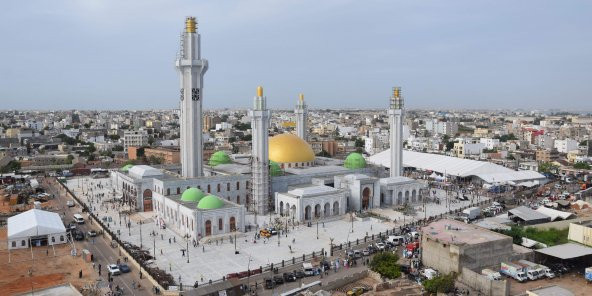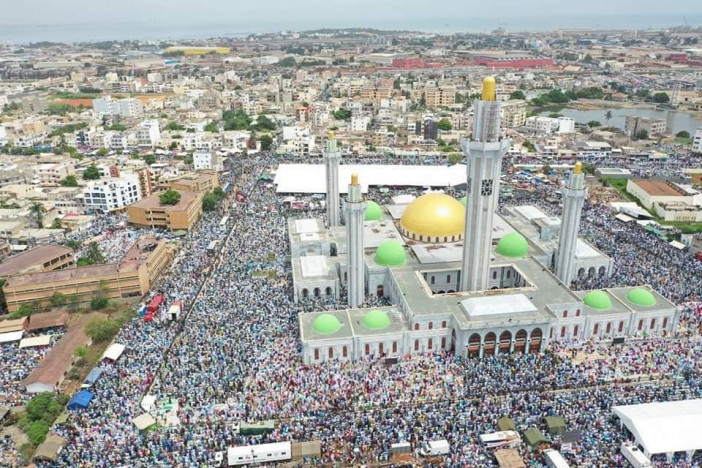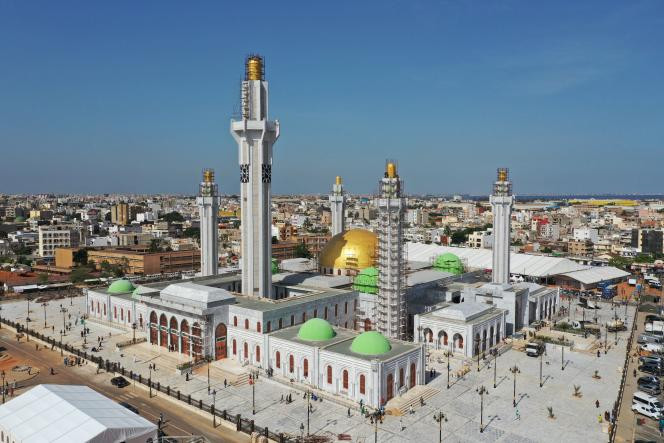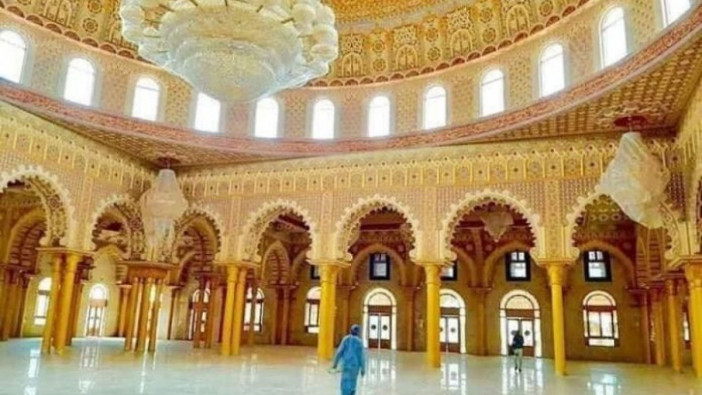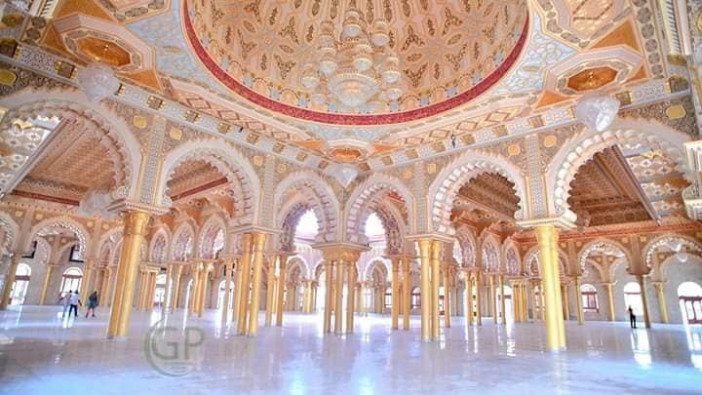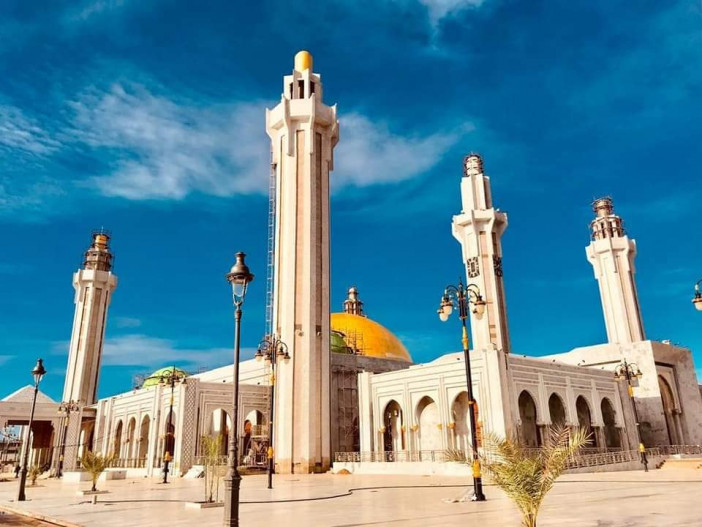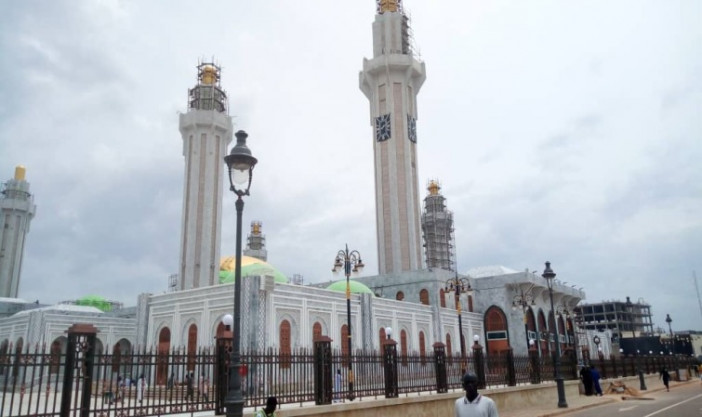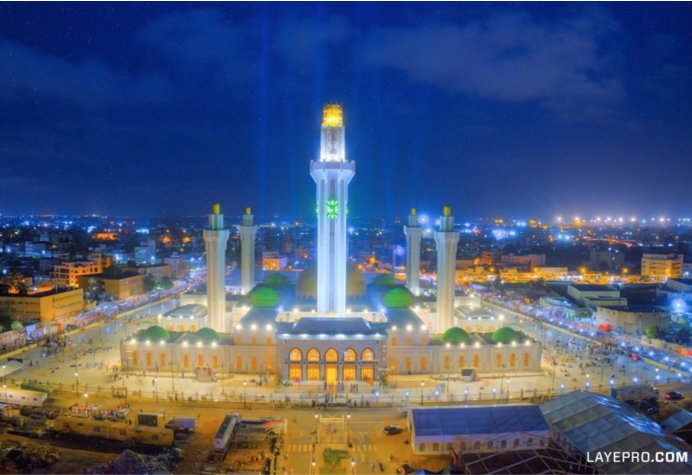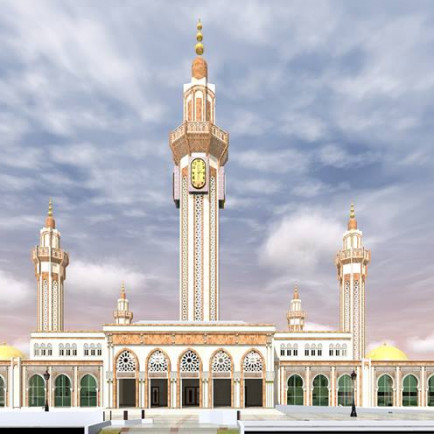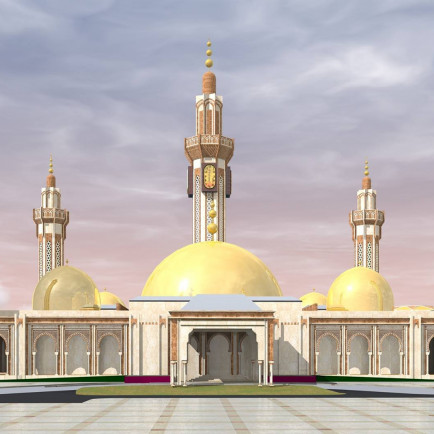The Massalikoul Djinane Mosque
History
In the early 2000s, the land where the mosque stands today was donated by President Abdoulaye Wade. The construction then took place for around 15 years by Consortium des Entreprises du Sénégal and eventually the mosque was opened on 27 September 2019
Urban and Architectural
The mosque is illuminated by the 2,000 lights of a giant chandelier. The result of fifteen years of work, which mobilized 800 workers, the mosque can hold 30,000 worshipers (10,000 inside and 20,000 on the esplanade). With its five minarets, it becomes the largest mosque in Dakar, and one of the most important in West Africa.
Description
architect Maissa Diodio Touré
The costs of the religious building would have exceeded 32 million dollars. The mosque has five minarets, a gold leaf cupola and decorations made by hand by Moroccan artisans. Some believe that the mosque is a symbol of the economic power of the Mourides which, over the years, allowed them to acquire significant political and cultural influence.
References
https://www.bbc.com/afrique/region-49850502
Details
Location
Dakar, Senegal
Worshippers
30 000
Year of Build
2018
Area
10000
Drawings
Map
History
In the early 2000s, the land where the mosque stands today was donated by President Abdoulaye Wade. The construction then took place for around 15 years by Consortium des Entreprises du Sénégal and eventually the mosque was opened on 27 September 2019
Urban and Architectural
The mosque is illuminated by the 2,000 lights of a giant chandelier. The result of fifteen years of work, which mobilized 800 workers, the mosque can hold 30,000 worshipers (10,000 inside and 20,000 on the esplanade). With its five minarets, it becomes the largest mosque in Dakar, and one of the most important in West Africa.
Description
architect Maissa Diodio Touré
The costs of the religious building would have exceeded 32 million dollars. The mosque has five minarets, a gold leaf cupola and decorations made by hand by Moroccan artisans. Some believe that the mosque is a symbol of the economic power of the Mourides which, over the years, allowed them to acquire significant political and cultural influence.


